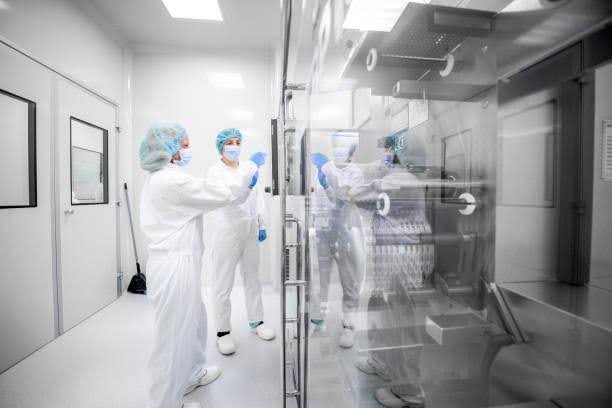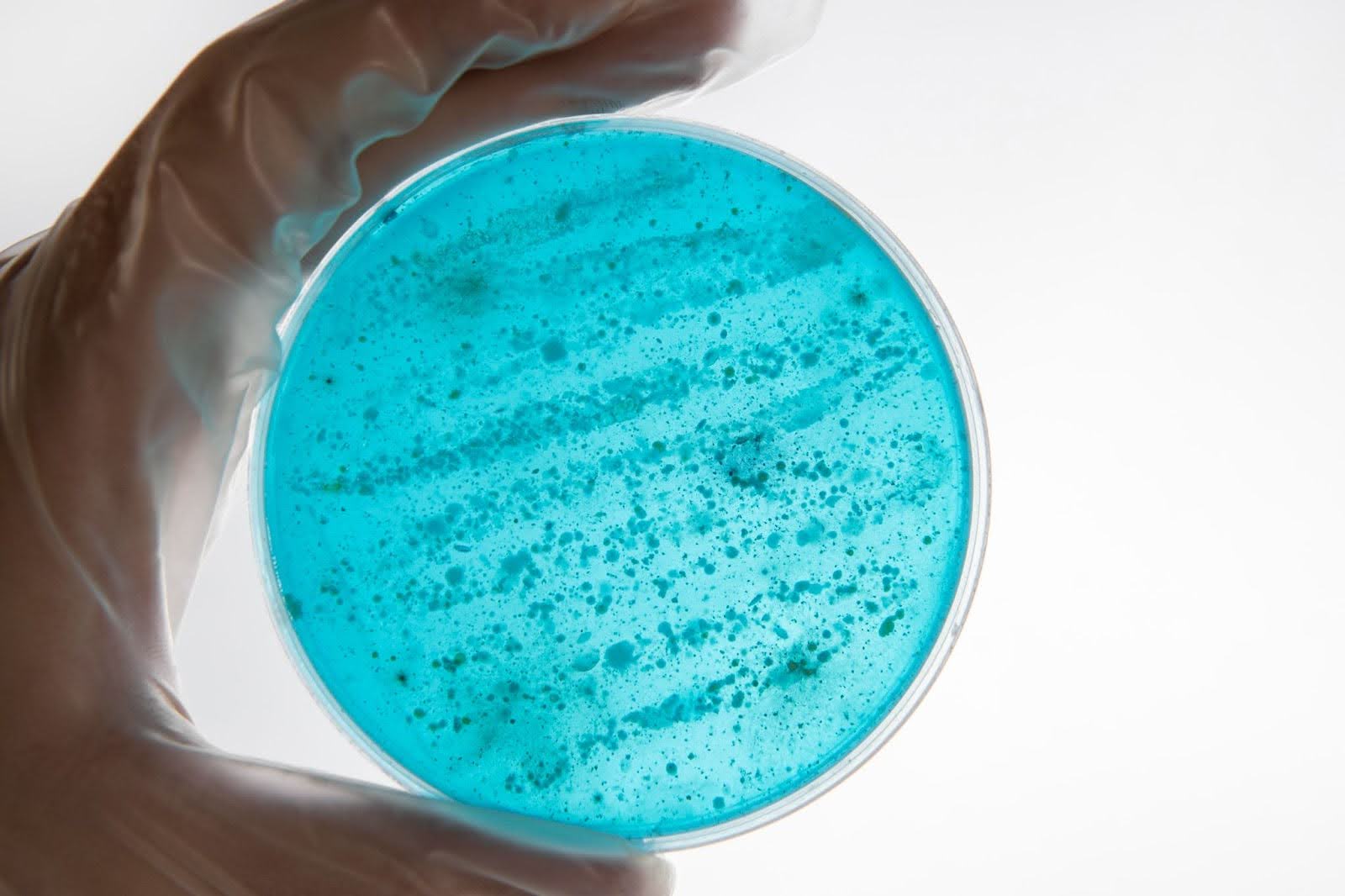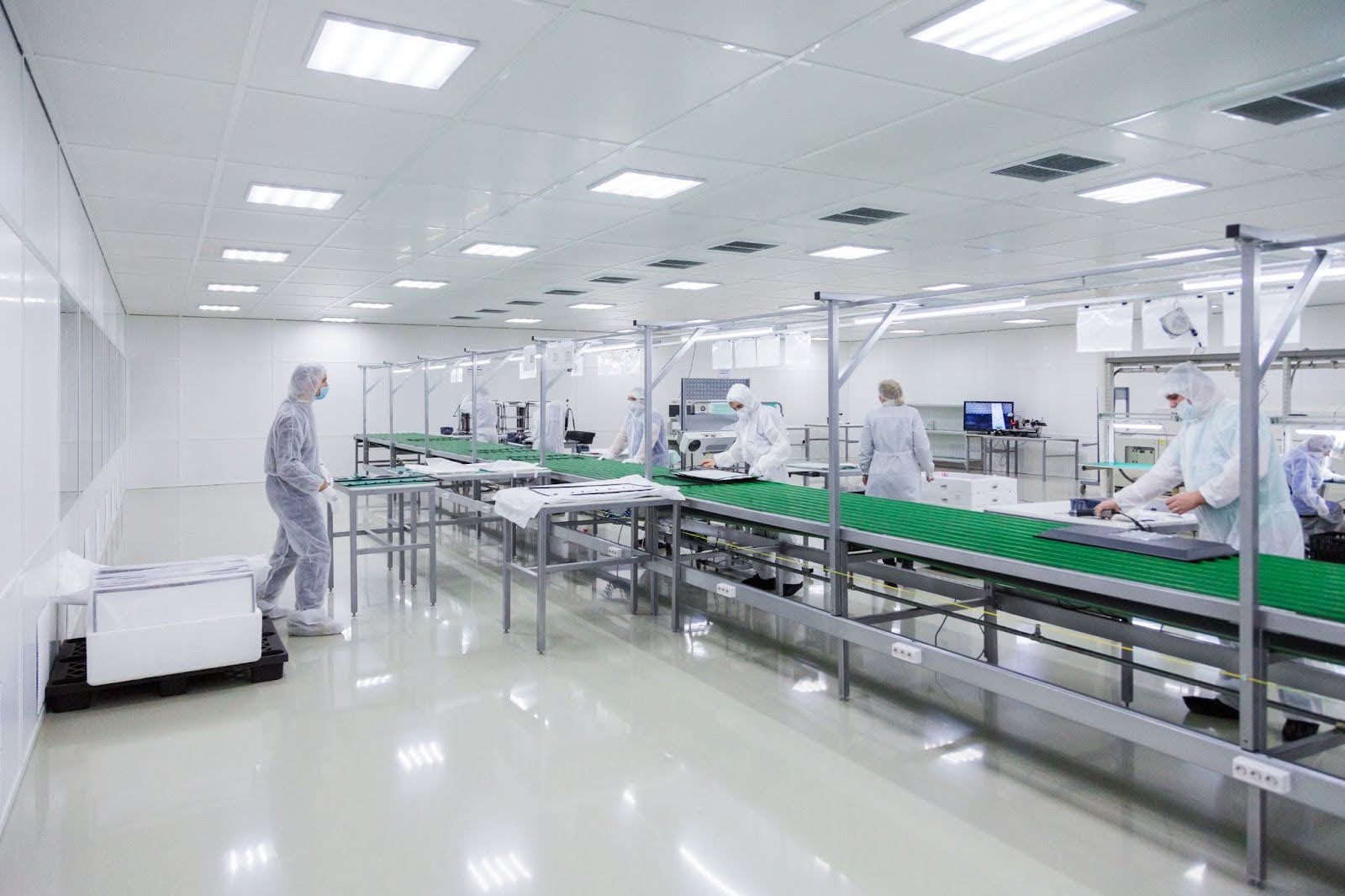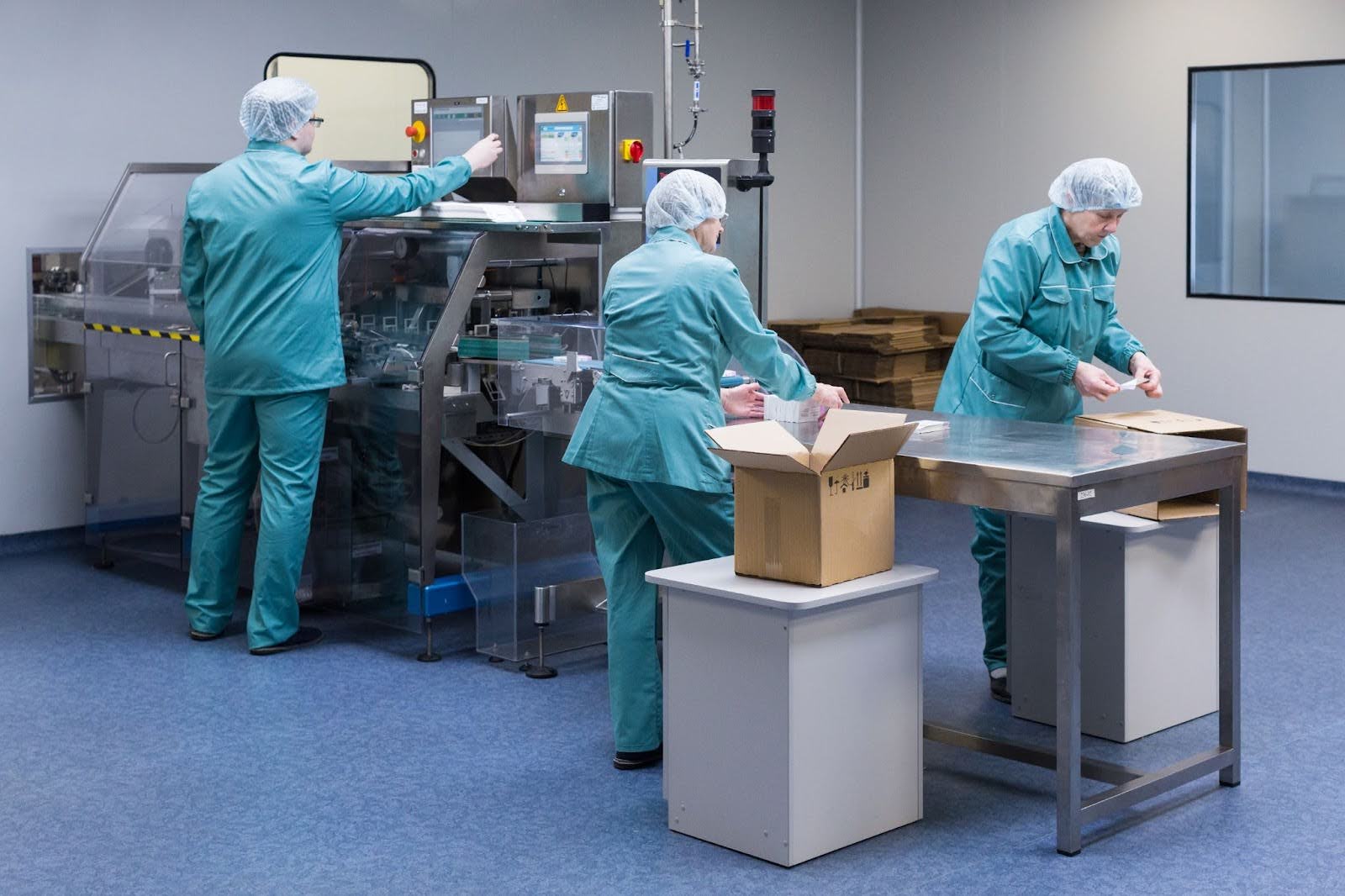by Simantini Singh Deo
7 minutes
AI For Micro Trend Detection In Environmental Monitoring & Contamination Control Strategy
AI transforms contamination control with micro trend detection, enabling predictive, data-driven sterility assurance in pharma manufacturing.

In the pharmaceutical and biotechnology industries, maintaining sterility and a contamination-free environment is not just a regulatory requirement, it is a critical factor that directly impacts patient safety. Any breach in contamination control can lead to compromised products, regulatory penalties, and serious health risks.
Environmental Monitoring (EM) and Contamination Control Strategies (CCS) are the cornerstone of sterile manufacturing processes, particularly for injectable drugs, vaccines, and advanced therapies. Pharma manufacturers are increasingly exploring CCS outsourcing for sterility assurance to strengthen contamination control frameworks and ensure consistent regulatory compliance.
Recent advancements in Artificial Intelligence (AI) have transformed how contamination trends are detected and managed in cleanrooms and controlled spaces. AI-powered micro trend detection allows organizations to move beyond reactive monitoring to predictive and proactive contamination control, enhancing both compliance and product quality.
This article explores how AI is shaping micro trend detection in EM and CCS, its applications, benefits, and implementation considerations!
Understanding Environmental Monitoring And Contamination Control Strategy
Environmental Monitoring (EM) is a systematic approach to assessing the cleanliness and microbial status of controlled environments in pharmaceutical manufacturing. It involves the collection and analysis of data on particulate matter, microorganisms, and other contaminants in air, surfaces, water, and equipment.
EM ensures that controlled spaces comply with regulatory standards such as ISO 14644, GMP, and USP <1116>.
Contamination Control Strategy (CCS), on the other hand, is a holistic plan designed to prevent contamination in manufacturing processes. It combines engineering controls, procedural controls, personnel training, and continuous monitoring to create a robust framework that maintains product sterility and safety.
The goal of CCS is to identify potential contamination sources, implement preventive measures, and respond promptly to deviations.
Together, EM and CCS form a feedback loop: EM provides real-time and historical data, while CCS uses that data to refine process controls and reduce contamination risks. Integrating EM and CCIT for sterility assurance helps facilities bridge monitoring data with container closure integrity testing to achieve holistic sterility validation.
Traditionally, EM data analysis relied on manual methods, statistical trend monitoring, and periodic review of control charts. While effective to an extent, these methods have limitations in detecting subtle or early micro trends that may indicate emerging risks.
The Emergence Of AI In Contamination Monitoring
Artificial Intelligence has introduced a paradigm shift in environmental monitoring. By leveraging machine learning (ML) algorithms, AI can analyze large volumes of historical and real-time EM data to identify patterns and trends that are often invisible to human analysts. The synergy of AI and rapid microbiological methods in cleanroom monitoring is redefining how facilities achieve faster, more accurate contamination detection.
Unlike traditional methods, AI does not just flag out-of-specification results, it predicts potential contamination events before they escalate.
Key AI capabilities in EM and CCS include:
- Pattern Recognition: AI algorithms can detect recurring microbial or particulate trends that may indicate early contamination.
- Anomaly Detection: Machine learning models can identify deviations from normal environmental parameters, such as sudden spikes in particle counts or microbial load.
- Predictive Analytics: AI can forecast future contamination events based on historical data, helping operators take proactive measures.
- Root Cause Analysis: AI can correlate multiple data streams such as HVAC performance, personnel movement, and equipment usage to identify the probable source of contamination.
By automating trend detection, AI reduces the reliance on human interpretation, which can be subjective and inconsistent. This not only increases accuracy but also speeds up decision-making, enabling real-time response to potential risks.
Micro Trend Detection: A Game-Changer In CCS
Micro trend detection refers to the identification of subtle, incremental changes in environmental conditions that could indicate a developing contamination problem. Unlike major deviations, which are often easy to spot, micro trends are small, gradual, and easily overlooked. These trends may manifest as:
- Slight increases in airborne particles over time
- Gradual changes in microbial populations on surfaces or in water systems
- Minor deviations in temperature, humidity, or airflow patterns
AI excels in micro trend detection because it can process massive datasets, recognize hidden patterns, and detect signals that fall below traditional threshold limits.
By capturing these early warning signs, organizations can intervene before a contamination event occurs, reducing product loss, recalls, and regulatory risk. Implementing single-use systems and bioburden control in CCS further strengthens proactive contamination prevention and improves cleanroom efficiency.
Benefits Of Micro Trend Detection Include:
Proactive Risk Mitigation: Early identification of trends allows for corrective actions before contamination escalates.
- Enhanced Compliance: Continuous monitoring and predictive analytics support regulatory expectations for a scientifically justified contamination control strategy.
- Cost Savings: Preventing contamination events reduces material loss, downtime, and investigation costs.
- Data-Driven Decision Making: AI provides actionable insights that inform process improvements, equipment maintenance, and personnel training.
How AI Works In EM And CCS?
Implementing AI in EM involves several stages:
1. Data Collection
AI relies on high-quality data from multiple sources:
- Airborne particle counters track particulate levels in real time.
- Surface and personnel monitoring capture microbial contamination on critical surfaces and operators.
- Water and utility systems provide data on potential sources of contamination.
- Process and environmental sensors continuously record temperature, humidity, airflow, and pressure.
The more comprehensive the dataset, the more accurate AI predictions and micro trend detection will be. Integrating utilities like Clean Steam and WFI in sterile manufacturing ensures that water and steam systems support the same predictive control principles applied in EM.
2. Data Pre-Processing
Raw data is cleaned, normalized, and transformed into a format suitable for machine learning models. This step may include handling missing values, removing outliers, and standardizing units. Data preprocessing ensures that AI algorithms analyze consistent and meaningful information.
3. Model Training
Machine learning models are trained using historical EM data to recognize patterns associated with contamination events. These models can use supervised learning, unsupervised learning, or a combination of both:
- Supervised learning uses labeled data to predict outcomes, such as contamination risk levels.
- Unsupervised learning identifies hidden patterns or clusters in data, such as gradual microbial growth trends.
4. Continuous Monitoring and Prediction
Once trained, AI models continuously analyze incoming EM data in real time. Predictive algorithms generate alerts when micro trends indicate a potential contamination risk. Advanced visualization dashboards allow operators to monitor trends, review historical data, and make informed decisions quickly.
5. Feedback & Improvement
AI models improve over time as new data is collected. Continuous learning allows models to adapt to changing environmental conditions, process modifications, and seasonal variations, ensuring that trend detection remains accurate and reliable. Modern facilities adopting single-use systems in aseptic manufacturing gain additional control by minimizing cross-contamination and reducing cleaning validation complexity.
Applications Of AI In Contamination Control
AI-driven micro trend detection is applicable across multiple areas of contamination control:
a) Cleanroom Monitoring: AI identifies trends in particle counts, microbial load, and environmental parameters in aseptic areas.
b) Water and Utility Systems: Predictive models detect deviations in water quality, temperature, or flow that may increase contamination risk.
c) Personnel Movement Analysis: AI can correlate operator movement patterns with contamination events, helping optimize gowning procedures and workflow.
d) Equipment Performance Monitoring: Predictive maintenance algorithms detect trends that may compromise sterility, such as filter clogging or HVAC inefficiency.
e) Regulatory Compliance Reporting: AI generates automated reports and visualizations that demonstrate a robust contamination control strategy to regulators.
By integrating AI across these applications, organizations can achieve a holistic, data-driven CCS that enhances both efficiency and product safety.
What Are The Challenges And Considerations?
While AI offers significant advantages, implementing it in EM and CCS requires careful planning:
a) Data Quality: AI is only as good as the data it analyzes. Inaccurate or incomplete data can lead to false predictions.
b) Validation: Regulatory authorities expect AI tools to be validated and scientifically justified, ensuring that predictions are reliable.
c) Integration: AI must seamlessly integrate with existing EM systems, sensors, and manufacturing workflows.
d) Change Management: Staff need training to understand AI insights and respond appropriately to alerts.
e) Regulatory Acceptance: Continuous collaboration with regulators is essential to ensure AI-driven strategies meet GMP and ISO standards.
Addressing these challenges early in implementation ensures a smooth transition from traditional monitoring to AI-enabled predictive control. Complementary measures like endotoxin control and depyrogenation in pharma also play a vital role in maintaining product sterility and patient safety.
Future Outlook
AI’s role in EM and CCS is set to grow as algorithms become more advanced, enabling automated, real-time contamination control with greater accuracy. By integrating diverse datasets, AI can predict and prevent rare contamination events, such as biofilm formation or microbial resistance.
It will also support continuous improvement by guiding process optimization, equipment maintenance, and personnel practices. Ultimately, AI will enhance human expertise, allowing faster, proactive, and data-driven contamination control that ensures both patient safety and regulatory compliance.
In Conclusion
Artificial Intelligence is transforming environmental monitoring and contamination control strategies in pharmaceutical manufacturing. By enabling micro trend detection, AI allows organizations to anticipate contamination events, reduce risk, and optimize process controls. From cleanroom monitoring to water systems and personnel tracking, AI enhances the ability to maintain a sterile and compliant manufacturing environment.
The adoption of AI in EM and CCS is not just a technological upgrade, it is a strategic shift toward predictive, data-driven contamination control. Pharmaceutical companies that embrace AI-powered micro trend detection will benefit from improved patient safety, operational efficiency, regulatory compliance, and overall product quality. In the area of sterile manufacturing, AI represents a powerful ally, transforming reactive contamination control into a proactive, intelligent, and future-ready strategy.
FAQs
1. What Is Micro Trend Detection In Environmental Monitoring (EM) And Contamination Control Strategy (CCS)?
Micro trend detection refers to the identification of subtle, incremental changes in environmental conditions—such as slight increases in microbial load or particulate levels—that could indicate a developing contamination risk. Detecting these early trends allows manufacturers to intervene before a contamination event occurs.
2. How Does AI Enhance Micro Trend Detection In EM And CCS?
AI analyzes large volumes of real-time and historical EM data to identify patterns and anomalies that may not be visible through traditional monitoring. Machine learning algorithms can predict potential contamination events, correlate multiple data streams, and provide actionable insights, enabling proactive contamination control.
3. What Are The Key Benefits Of Using AI For EM And CCS?
AI-driven micro trend detection allows for proactive risk mitigation, enhanced regulatory compliance, reduced operational costs, and improved data-driven decision-making. It helps manufacturers maintain a sterile environment, prevent product loss, and optimize their contamination control strategies.
4. How Can AI Be Implemented In EM And CCS Effectively?
Effective implementation requires high-quality data collection from sensors and monitoring devices, preprocessing and cleaning of data, training of machine learning models, continuous monitoring and prediction, and ongoing feedback to refine the algorithms. Integration with environmental monitoring systems and staff training are also essential for optimal results.




